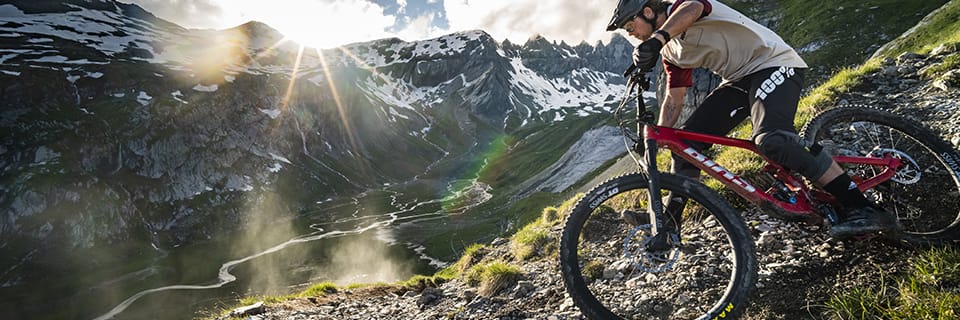A key component of a suspension frame for precise, comfortable riding, theMTB shock absorber must be selected with care. More and more elaborate and high-performance, their choice is all the more complex. Here's a guide to help you find the one that's right for you.
Standard models
You won't necessarily be able to fit just any shock absorber on your frame. Apart from the choice of technology (air, coil spring...), you'll need to respect the following points depending on your frame's compatibility:
- Mounting center distance a distance between 2 anchoring points
- Stroke: travel over which the shock absorber will operate
- Size/shape: some frames will not accept a model that is too bulky
- Setting (or original configuration)

Shock absorber types
A suspension is always made up of 2 distinct components:
- The spring air spring b or helical c ;
- The damping section, always hydraulic, housed entirely in the damper body or partly offset in a piggyback reservoir. c1.

The air springs (or air springs) are lighter and offer what's known as progressive operation. They allow simpler, finer adjustment to the rider's weight using a high-pressure pump.
Some brands offer the same model in different air tank sizes. The greater the volume of air, the closer your shock absorber will come to linear behavior, and the better it will handle temperature variations due to operation. The lower the air volume, the more progressive your damper will be.
The coil-spring shock absorbers are more sensitive to small shocks and offer what is known as linear operation. Reliability is their strong point, but they are heavier. They require a spring adapted to the rider's weight (not supplied as standard).
The function of the hydraulic part is to control compression speed (or depression). d and expansion e (or rebound) by laminating the oil inside. Some models feature a piggyback, which not only provides a larger volume of oil for better management of temperature variations, but also enables finer adjustment of compression and rebound.

The setting is the preparation of your shock absorber by the manufacturer, to adapt it to the kinematics of your bike. This setting affects two parameters (compression and rebound) and is generally made on three levels.

To choose the right setting for your frame, it's best to refer to the manufacturer's information.
Which shock absorber is right for me?
-
Hiking
When riding your mountain bike, choose an air shock for easy adaptation to your weight, and a conventional air shock for greater versatility. When it comes to hydraulics, keep things simple: locking the damper for very rolling sections or climbs, and adjusting the rebound will suffice.
-
Cross-Country
Do you prefer cross-country riding with your semi-rigid mountain bike? Choose a lightweight shock absorber with an air system and the smallest possible volume to limit losses due to pumping. A handlebar lock if possible and a rebound adjustment are necessary for sporting use.
-
All-Mountain
For All-Mountain riding with a full-suspension mountain bike, the performance and lightness of an air shock will be an asset. Preferably with a classic, or even large, reservoir, to maintain perfect operation on descents. The rebound adjustment is essential and the compression adjustment is recommended to adapt to all types of trails. However, locking is not mandatory.
-
Enduro
For Enduro riding, an air system is again the best choice for optimizing performance, with a wide reservoir to maintain perfect downhill behavior. Rather than blocking, you'll opt for compression and rebound adjustment to adapt to the different characteristics of the terrain. What's more, a carboy version will also be an advantage (if your frame allows it) to ensure reliable hydraulic support on fast, brittle descents.
-
DH / Freeride
In DH / Freeride, coil-sprung shock absorbers with carboys are king, for obvious reasons of robustness and good management of temperature variations. However, air systems, which are becoming more and more efficient, are beginning to make their mark in this field. One or even two compression settings (at high and low speeds) are required, as for expansion.
Découvrez tous nos conseils & Tutoriels
MTB - Shock Absorbers
-

ROCKSHOX SUPER DELUXE RCT Trunnion Spring Shock Absorber
Regular price 249,90 €Regular priceUnit price per -
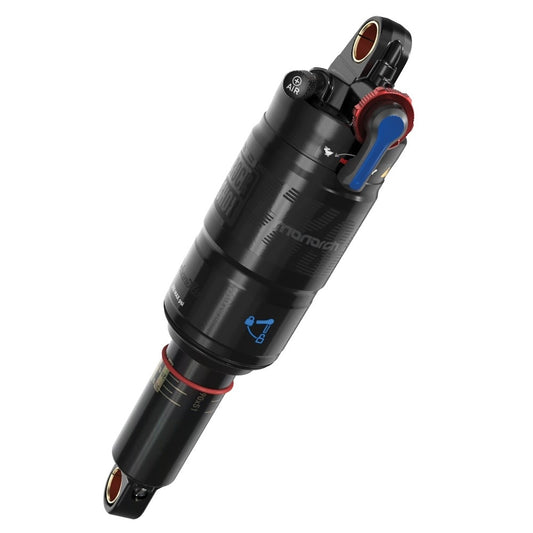
ROCKSHOX MONARCH RL Mid Reb/Mid Comp shock absorber
Regular price 179,90 €Regular priceUnit price per -
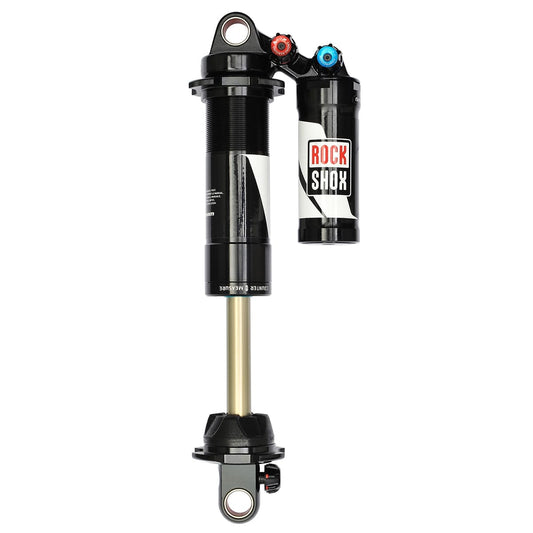
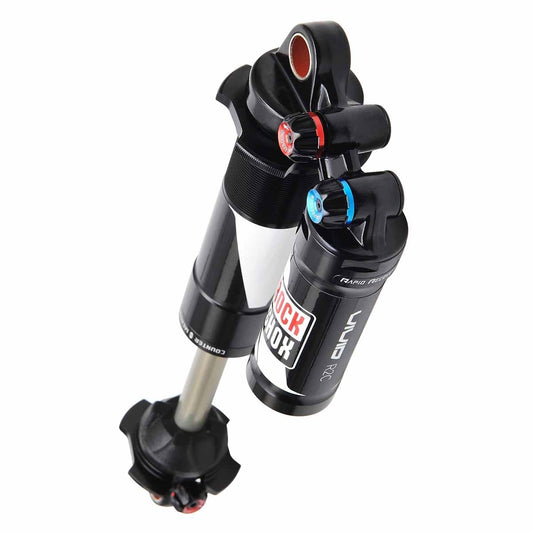
ROCKSHOX VIVID R2C Mid Reb/Low Comp spring shock absorber
Regular price From 299,90 €Regular priceUnit price per -
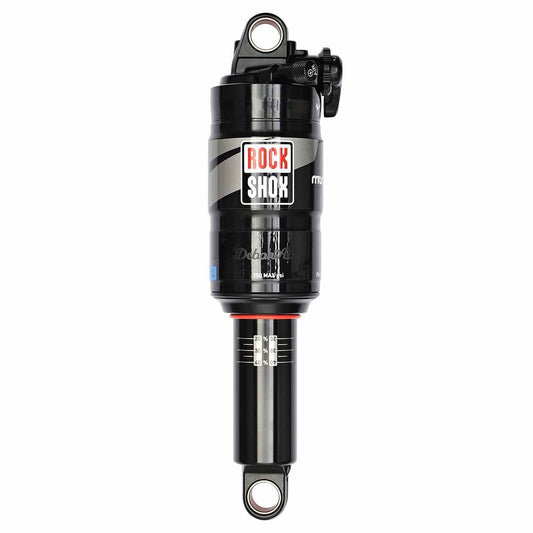
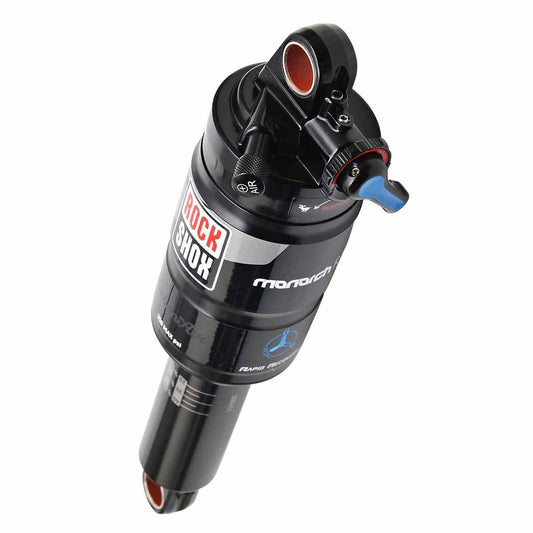
ROCKSHOX MONARCH RT3 DEBONAIR Mid Reb/Mid Comp shock absorber
Regular price From 249,90 €Regular priceUnit price per -
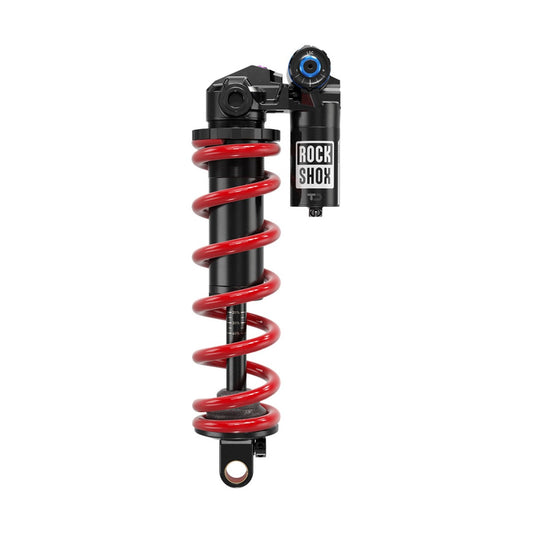
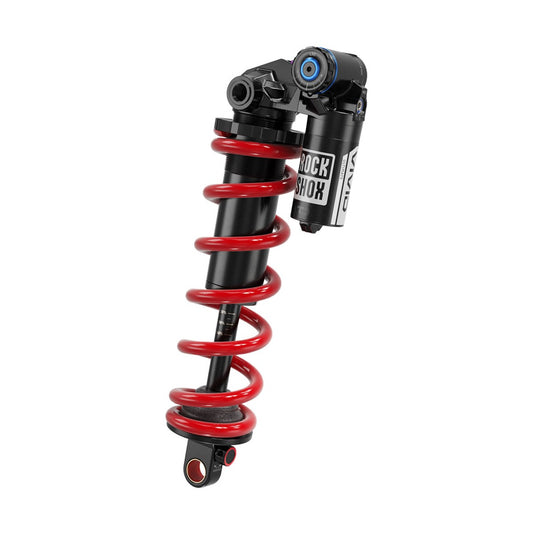
ROCKSHOX VIVID ULTIMATE DH RC2 HBO Trunnion Spring Damper
Regular price From 399,90 €Regular priceUnit price per -
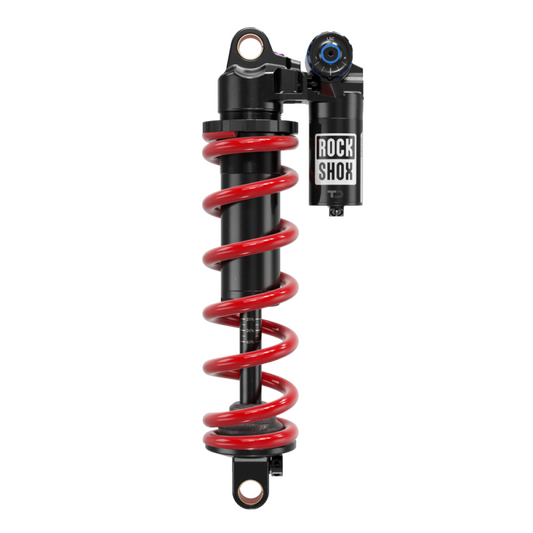
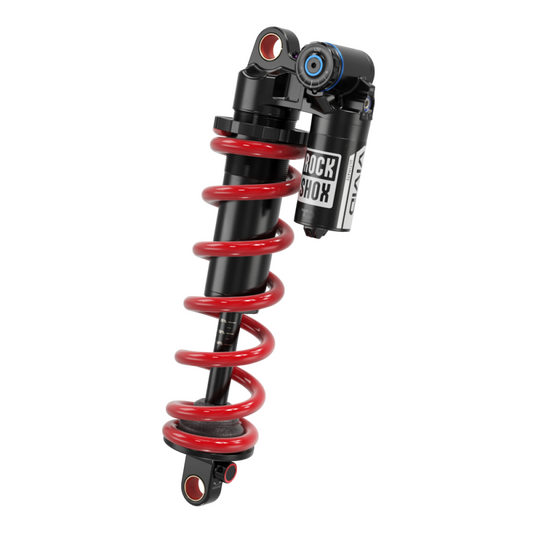
ROCKSHOX VIVID ULTIMATE DH RC2 HBO
Regular price 419,90 €Regular priceUnit price per -
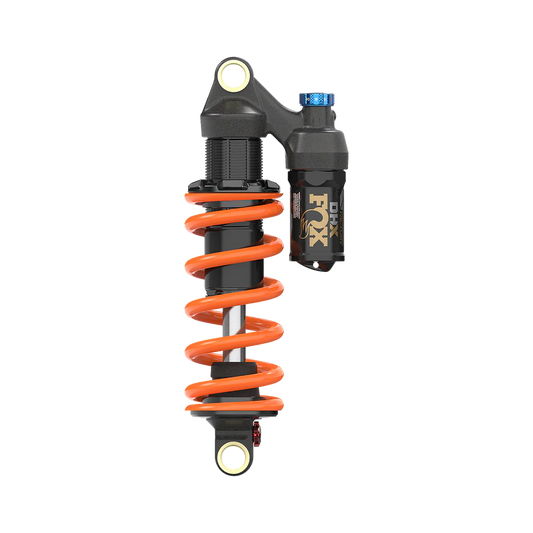
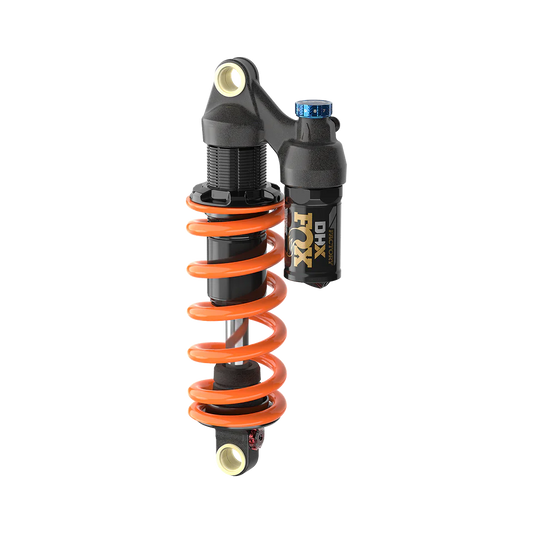
Shock absorber FOX DHX FACTORY 2pos-Adj Spring 2025
Regular price 649,90 €Regular priceUnit price per -


ROCKSHOX VIVID ULTIMATE DH RC2 HBO Trunnion Spring shock absorber for Trek Session (2022+)
Regular price 439,90 €Regular priceUnit price per
